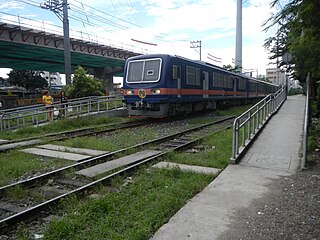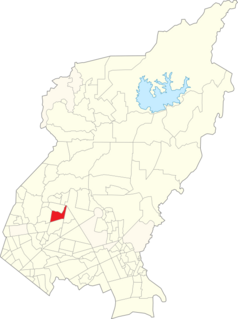
Rail transportation in the Philippines presently is used mostly to transport passengers within Metro Manila and the nearby province of Laguna. Freight transport is nonexistent, although there are plans for a revival from Port Area, Manila to Laguna, and a cargo train planned between Subic and Clark. Currently, the country has a railway footprint of only 79 kilometres through Line 1, Line 2, Line 3 and the Philippine National Railways (PNR) Metro Commuter Line. This situation will change in the immediate future as the government has plans to expand its current footprint to more than 244 kilometers.
The public transportation system in Metro Manila, Philippines is inadequate to accommodate the mobility and other basic needs of a densely populated metropolis, the result of many factors and problems that the government has failed to deliver. Metro Manila exists in a state of heavy traffic congestion, with people and goods trapped by the very transportation system that is supposed to move them quickly and efficiently. Because of the insufficient public transportation network, car ownership has risen dramatically, contributing further to the congestion that occurs at all times of day on the road. Filipinos view cars as tools to get them to where they need to go; they also believe that their car is an important symbol of the success they have achieved in life. In recent years, however, the Philippine government has been pushing to improve the system through various infrastructure projects, hoping to solve the interlinked problems of transportation, land use and environment.

The Manila Metro Rail Transit System Line 7, also known as MRT Line 7, or MRT-7, is an under-construction rapid transit line in the Philippines. When completed, the line will be 22.8 kilometers long serviced by 14 stations. The line runs in a northeast-southwest direction, beginning at San Jose del Monte, Bulacan up to the under-construction North Avenue Grand Central station located in North Avenue, Quezon City. The line will traverse Quezon City and Caloocan in Metro Manila, and is envisioned to spur business and commerce at its inter-modal terminal station in San Jose del Monte, Bulacan. According to the latest update, the project is 41.61% complete as of March 31, 2019.

The transportation system in Metro Manila is currently inadequate to accommodate the mobility and other basic needs of an densely populated metropolis, the result of many factors and problems that the government has failed to provide or address. Metro Manila exists in a state of near-permanent gridlock, with people and goods trapped by the very transportation system that is supposed to move them quickly and efficiently.

Emerald station is an under construction station on the Manila Light Rail Transit System Line 2 in the Philippines. It is part of the Line 2 East Extension and one of many elevated stations that can be found on the line located in Barangay San Roque in Marikina. The station is located on the stretch of the Marikina–Infanta Highway and is named after the adjacent Emerald Drive.
The Manila Light Rail Transit System Line 4 is a proposed rapid transit line to be built in Metro Manila and Rizal in the Philippines. When completed, it will be the second rapid transit line serving the province of Rizal after the extension of Line 2 to Antipolo.

Metro Manila Subway Line 9, formerly known as the Mega Manila Subway, is an underground rapid transit line currently under construction in Metro Manila, Philippines. The 36-kilometer (22 mi) line, which will run north–south between the cities of Quezon City, Pasig, Makati, Taguig and Pasay, will serve fifteen stations between the Quirino Highway and FTI stations. It will also serve as the country's second direct airport rail link, with a branch line to Ninoy Aquino International Airport. The line is designed to connect with the other urban rail transit services in the region, including Line 1, Line 3, and Line 7 at the North Avenue Common station, which is also currently under construction; the existing Line 2 and Metro Commuter Line; and the planned Line 5 and Line 8.

Bungad is one of the 142 barangays of Quezon City, Metro Manila, Philippines bounded by Veterans Village in the North, San Antonio in the West, Paltok in the South and West Avenue in the East.
Light Rail Manila Corporation (LRMC) is a rail service company based in Pasay, Metro Manila, Philippines. It is a consortium of three major infrastructure companies engaged in the operation and maintenance of the Manila Light Rail Transit System Line 1 since September 2015. The consortium is composed of Metro Pacific Light Rail Corp., a subsidiary of Metro Pacific Investments Corporation, AC Infrastructure Holdings Corp., a subsidiary of Ayala Corporation, and Macquarie Infrastructure Holdings (Philippines) Pte. Ltd.
Quezon Memorial Station is a proposed station of the Manila Metro Rail Transit System Line 8 located near the Quezon Memorial Circle, Quezon City. The station shall be housed separately from its namesake station on the Line 7 which is right across each other.
EDSA Station is a proposed station of the Manila Metro Rail Transit System Line 8 located beneath the EDSA-Quezon Avenue Crossing in Diliman, Quezon City. The station shall be an interchange with the Line 3 and Line 9 at Line 3 Quezon Avenue station and Line 9 Quezon Avenue station which shall be nearby this station.
Timog Station is a proposed station of the Manila Metro Rail Transit System Line 8 located nearby the Timog Avenue-West Avenue crossing in Diliman, Quezon City.
A. Roces Station is a proposed station of the Manila Metro Rail Transit System Line 8 located nearby the Don A. Roces Street crossing in Quezon City.
G. Araneta Station is a proposed station of the Manila Metro Rail Transit System Line 8 located nearby the G. Araneta Avenue crossing in Quezon City.
Welcome Rotonda Station is a proposed station of the Manila Metro Rail Transit System Line 8 located nearby Welcome Rotonda in Quezon City.
Antipolo Station also called as Maceda Station is a proposed station of the Manila Metro Rail Transit System Line 8 located in Sampaloc, Manila. The station shall serve as the junction point between the line and the future PNR NSCR at its España station which shall allow interoperability of both railway lines at each other's tracks similar to that of the Line 9 at FTI station.
The University of Santo Tomas Station also called as UST Station is a proposed station of the Manila Metro Rail Transit System Line 8 located in Sampaloc, Manila. The station shall be the last station at España Boulevard before it turns right towards Lerma.
The Lerma Station is a proposed station of the Manila Metro Rail Transit System Line 8 located in Sampaloc, Manila. The station shall be the western terminus of the line and shall be an interchange with Line 1 at Doroteo Jose station and Line 2 at Recto station via an elevated walkway.







